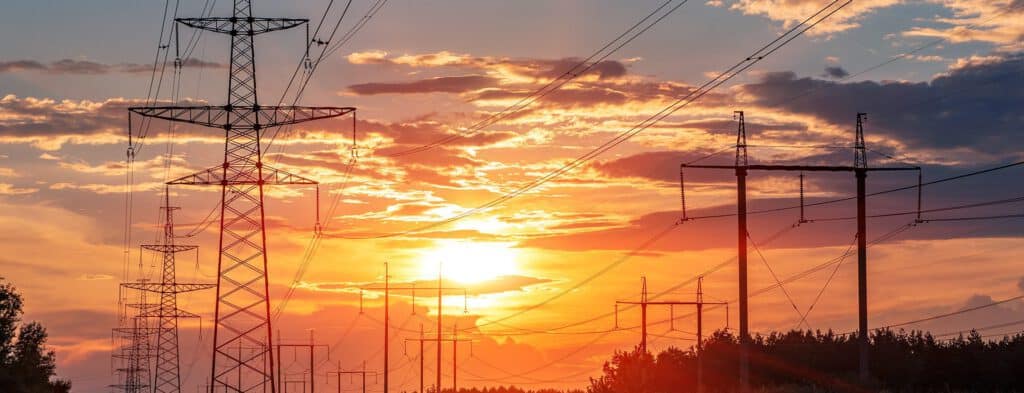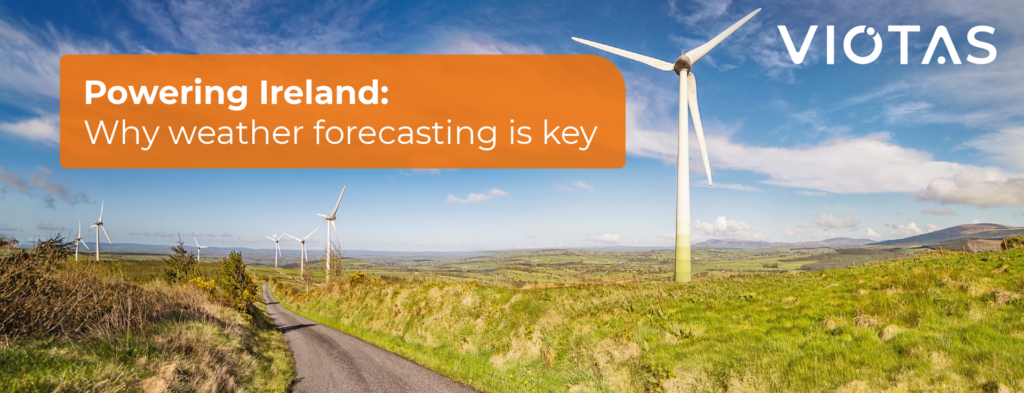
How Can Data Centres Help Stabilise The Irish Power System, This Winter And Beyond?
The Irish power system is facing unprecedented challenges, the origins of which predate, but are significantly magnified by, concerns surrounding the supply of natural gas supply arising from the Ukraine crisis. Demand Side Units (DSUs) are being increasingly called upon to reduce large volumes of participating electricity customers’ demand to ensure power system security at times of scarcity on the grid. The System Operator EirGrid has suggested that without increased Demand Response participation delivering greater amounts of flexibility to the grid, there is the potential for negative system margins necessitating mandatory demand curtailment of large commercial and industrial sites.
Flexibility providers are increasingly critical to maintaining grid stability and reliability; from providers who contribute capacity to ensure system security during scarcity events, to those delivering fast-acting response that will be essential to enabling grid operation at close to 100% instantaneous levels of renewable generation in the future.
Ireland has in excess of 1,000 MW of existing Data Centres. Driven by very high resilience requirements for their core operations, Data Centres are equipped with backup generation assets, which have the capability to provide the flexibility required by the grid while simultaneously ensuring resilience for their owners.
As well as realising an additional revenue stream from providing flexibility services to the power system, there is an opportunity for Data Centres to contribute to ensuring power system security for all users of the electricity system. Data Centres can be an essential part of the solution, instead of being perceived as exacerbating the problem.
IRELAND’S GRID CHALLENGES
The Irish grid is a small synchronous island with modest interconnection to a single neighbouring market (GB), undergoing very high renewable deployments to meet Climate Action Plan target of 80% renewable electricity by 2030, while at the same time facing significant electricity demand growth and the retirement of a number of large conventional power stations.
In recent years, the Irish grid has experienced an increasing duration in AMBER ALERT state due to increasing demand, compounded by:
- Non-replacement of retiring thermal generation
- Forced outages of ageing thermal generation
- Times of low wind generation
Furthermore, to partially mitigate the anticipated shortfall in required power generation assets, the Department for Environment, Climate and Communications (DECC) has submitted plans to install 210 MW of emergency generation on an ESB site in Dublin’s North Wall. However, despite the underlying generators being dual-fuel capable, the planning application specifies that only natural gas will be provisioned for. While this is likely an effort to avoid planning restrictions that would arise on account of the emissions associated with burning distillate fuel oils, it increases Ireland’s sensitivity to potential natural gas supply shortages.
Multiple challenges compound each other and contribute to increasingly tight system margins. Demand Side Units (DSUs) are being called upon more regularly to ensure power system security at times of scarcity on the grid. There is now more than ever, a growing reliance on customer flexibility.

AN UNDESIRABLE BUT AVOIDABLE OUTCOME
Failure by the capacity market to procure sufficient volumes of generation to meet projected electricity demand in this and coming years, most notably in the Dublin region, is expected to exhaust DSU resources and result in negative system margins necessitating mandatory demand curtailment (MDC). The grid entering an emergency state would give rise to significant scrutiny and reputational damage. However, it is avoidable.
EirGrid has, in industry fora, expressed a strong preference for the industrial sites targeted for MDC to engage in financially incentivised market-based participation through DSUs to provide a more granular alternative to mitigate the need for the invocation of mandatory curtailment. Large energy users can help EirGrid prevent the power system entering an emergency state, rather than being forced to support the system after the fact via indiscriminate mandatory curtailment.
HOW DATA CENTRES CAN MAKE A DIFFERENCE
The challenges faced by the power system offer great opportunities for those who can be part of the solution, with the Data Centre industry perfectly positioned to benefit. Driven by very high resilience requirements for their core operations, all Data Centres are equipped with backup generation capacity and battery storage based uninterruptible power supply (UPS) systems. These types of assets have the capability to provide flexibility. A Data Centre’s UPS, Generation, and HVAC assets can support valuable services that enhance the operation of the power system.
Thanks to our extensive Demand Response portfolio, VIOTAS is uniquely positioned in Ireland, to create tailored Data Centre packages which minimise disruptions. Our market-leading technologies can target our clients’ efforts towards times in which the grid is in an alert state; when there is a high risk that insufficient action during this alert state could otherwise result in mandatory demand curtailment.
While EirGrid have indicated that they will call upon all available resources under mandatory demand curtailment when an emergency state occurs, VIOTAS enables a more granular approach to be exercised by EirGrid.
SOLUTION
DON’T JUST PROCURE GREEN ENERGY, ENABLE IT
While many Data Centres have power purchase agreements to procure 100% renewable energy to cover their annual consumption, ultimately the emissions associated with grid electricity are time and location dependent. Flexibility and system services are crucial to enabling the grid to operate at close to 100% instantaneous levels of renewable generation, without which achieving Ireland’s renewable and decarbonisation targets will not be possible.
By providing critical flexibility and system services to the power system, Data Centres can enable green as well as buying green. The time and spatial variations in availability of renewable energy generation and power system operational constraints mean there is an important distinction.
VIOTAS estimates that 200 MW of demand response made available by Data Centres and used for roughly 20 hours per year, or less, could avoid the approximately 120 million Euro capital investment and approximately 100,000 tons of embedded build-phase CO2 associated with building the equivalently sized peaking plant which would otherwise be required.
There’s now a compelling opportunity for Data Centres to unlock the flexibility inherent within their existing backup generation, UPS assets, and HVAC systems, and make it available to the Transmission System Operator, EirGrid, to support the power system when required.
If you’d like to learn more about how your business can benefit from participating in Demand Response, our team are available to answer your questions.



